Introduction
- The module focuses on market research and segmentation of the elderly community in the Mission Viejo, CA.
- Persons aged 65 years old and above represent 14.5 percent of the population.
- Male – 46,535 (48.8 %).
- Female – 48,755 (51.2%).
- The average age for Mission Viejo is 42.2 years relative to 45.6 years of California.
- Whites are the majorities, but the city has many other minorities.

Mission Viejo Races
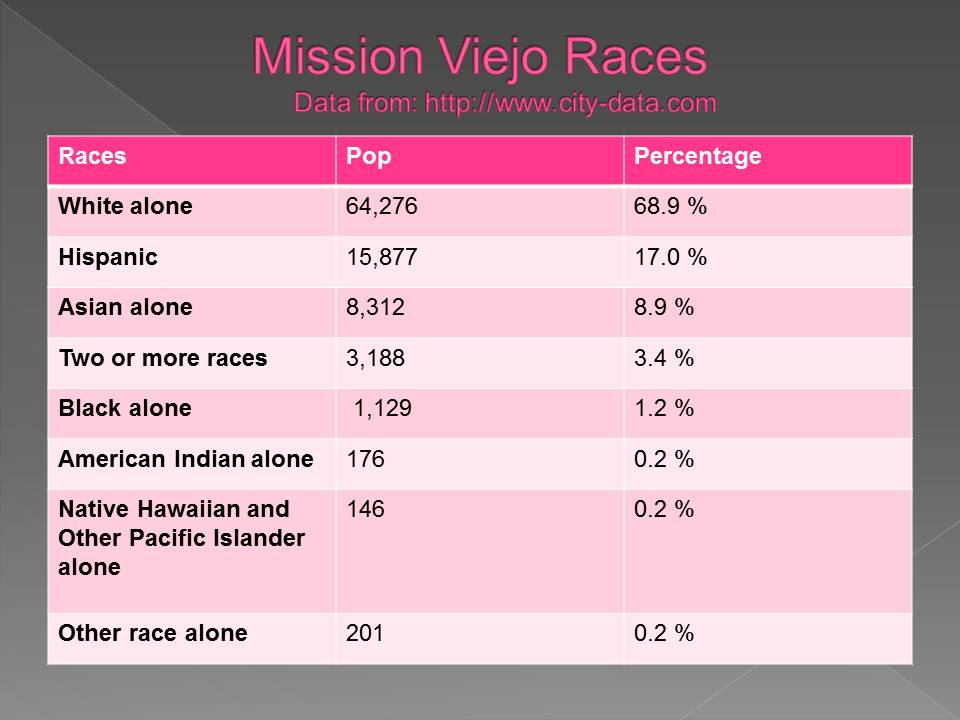
The target market subjects
- The target market for GAH consists of older adults above 65 years old in Mission Viejo, CA.
- The number of older adults continues to grow.
- This will result into a serious public health problem and a challenge for health care providers (Harris-Kojetin, Sengupta, Park-Lee and Valverde, 2013).
- It would affect family finance, the state and federal budgets, and private health care providers.

Common medical conditions for seniors
- Alzheimer disease;
- Diabetes;
- Depression;
- Heart disease;
- Cancer;
- Fall injuries;
- Loss of balance;
- Pneumonia;
- Flu;
- Osteoporosis;
- Vision problems;
- Hearing loss.
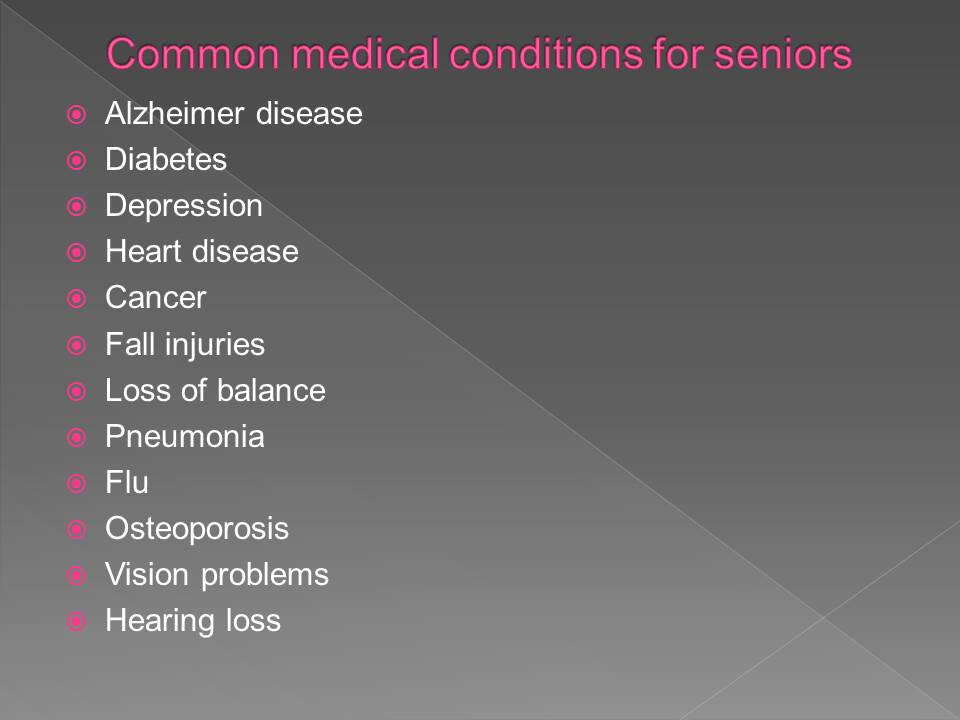
Segmentation
Segmentation of the target clients could be based on these chronic conditions, special care required, costs, services required (emergency or long-term care), and available facilities among others.
Location of the subjects
- The entire population at Mission Viejo lives in urban areas;
- Minority groups may be difficult to reach;
- GAH services should focus on minorities and other underserved individuals in Mission Viejo.
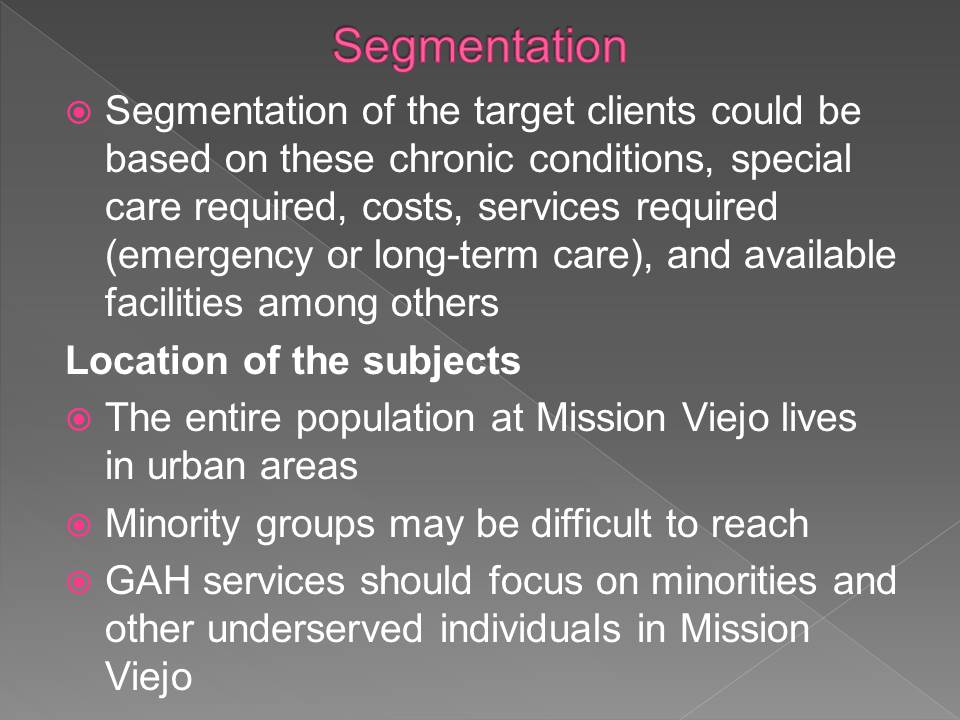
Special needs of the subjects
- Older adults are prone to chronic diseases, Alzheimer disease, arthritis, dementia, and other disabilities;
- They require easily accessible medical care;
- Some older adults may not be able to live independently at home, prevent abuse, get support, or afford health care services (Pozgar, 2007);
- Falls require special care because they could result into severe disability, injuries, or even death.
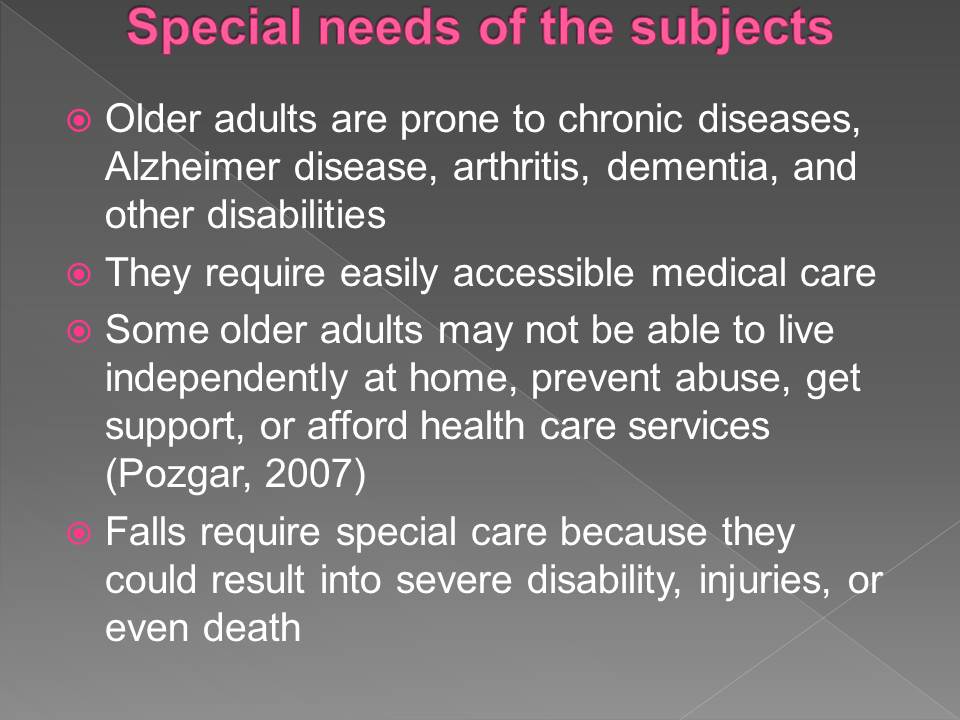
Special care
- Other older adults have shown impaired physical functions, sedentary behaviors, and poor quality of life (Christmas and Andersen, 2000);
- Some older adults may require lessons on managing chronic conditions;
- A lack of a caregiver may result into nursing home placement;
- Older adults require preventive health care services;
- GAH must encourage the use of preventive services among racial minorities in Mission Viejo;
- Older adults require support to complete basic daily activities;
- They may have complex, multiple conditions, which require several health care professionals (Niles, 2011);
- Physical activities would require special attention;
- They may also need special care for mental conditions, depression, drug abuse, transportation, and training for foster caregivers.

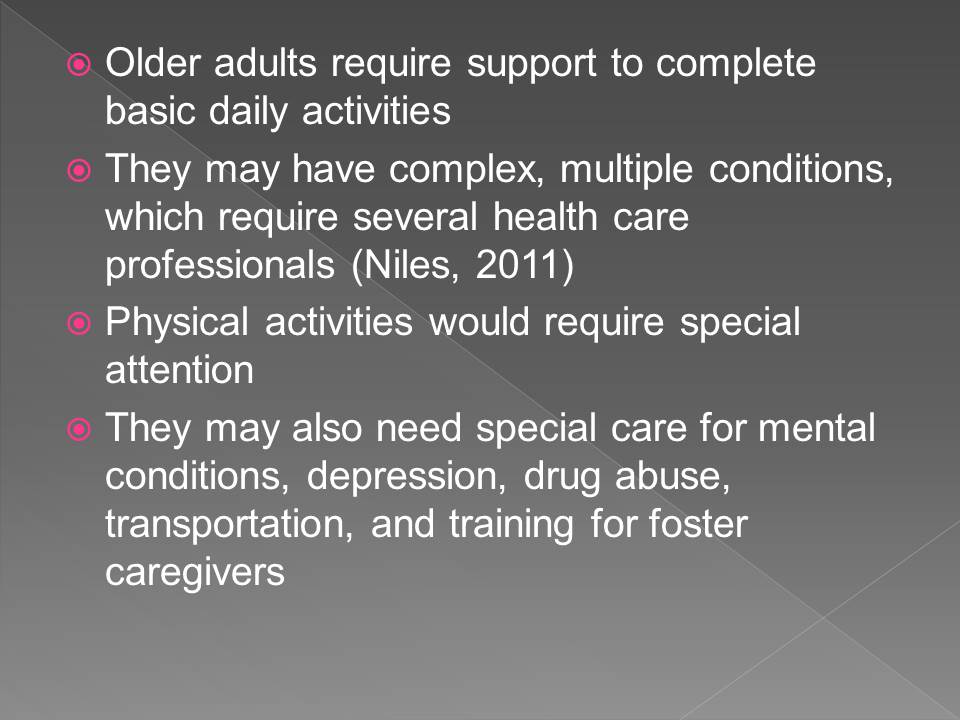
Special medical or health services required by older adults
- Older adults may require outpatient, outreach, and other case management services based on their conditions (Bohmer and Lee, 2009);
- Services also include specialized treatment and assessment for multiple, complex conditions;
- Older adults also require specialized services, which may include support and training services;
- They need onsite consultation, outreach, and mobile services;
- Seniors need regular evaluation, monitoring, and maintenance health care services.
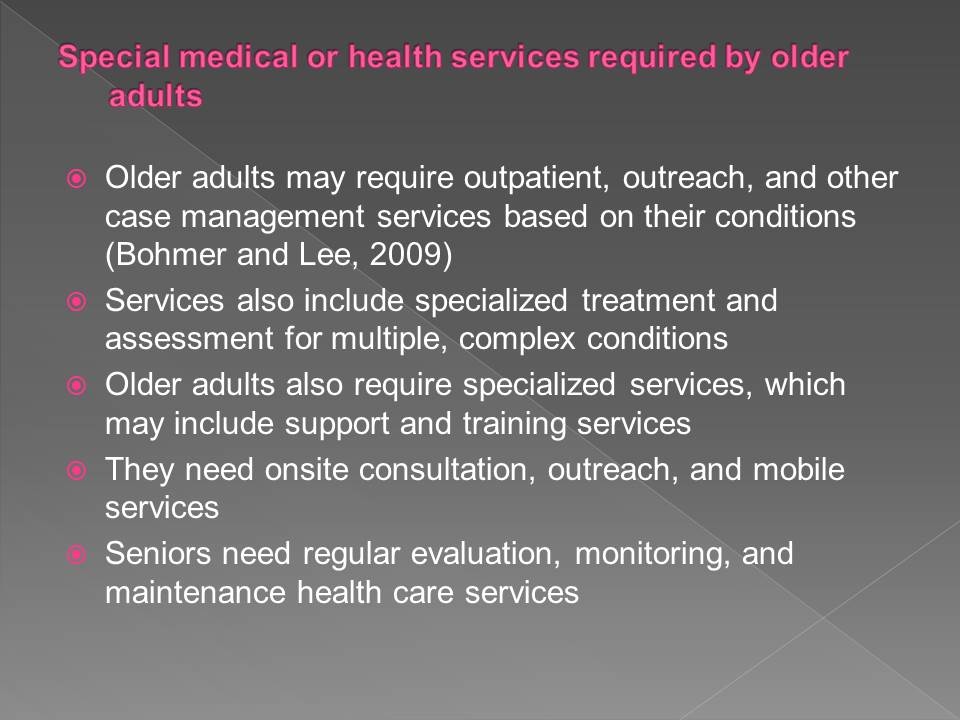
Care facilities for Seniors
Healthcare service providers for seniors:
- Adult day services centers – 8%;
- Assisted living care & Residential centers – 38%;
- Home health agencies – 21%;
- Nursing homes – 27%;
- Hospices – 6%.

Physician specialization that older adults would like
- GAH would require many health care services to manage complex diseases;
- Health care providers should also be professional in different fields to meet diverse needs of seniors;
- Coordination, transparency, and accountability among care providers are also necessary (Kurtzman, 2010);
- Older adults prefer a community clinic for some of their daily treatment needs to reduce rigidity in the system (Simonet, 2005).
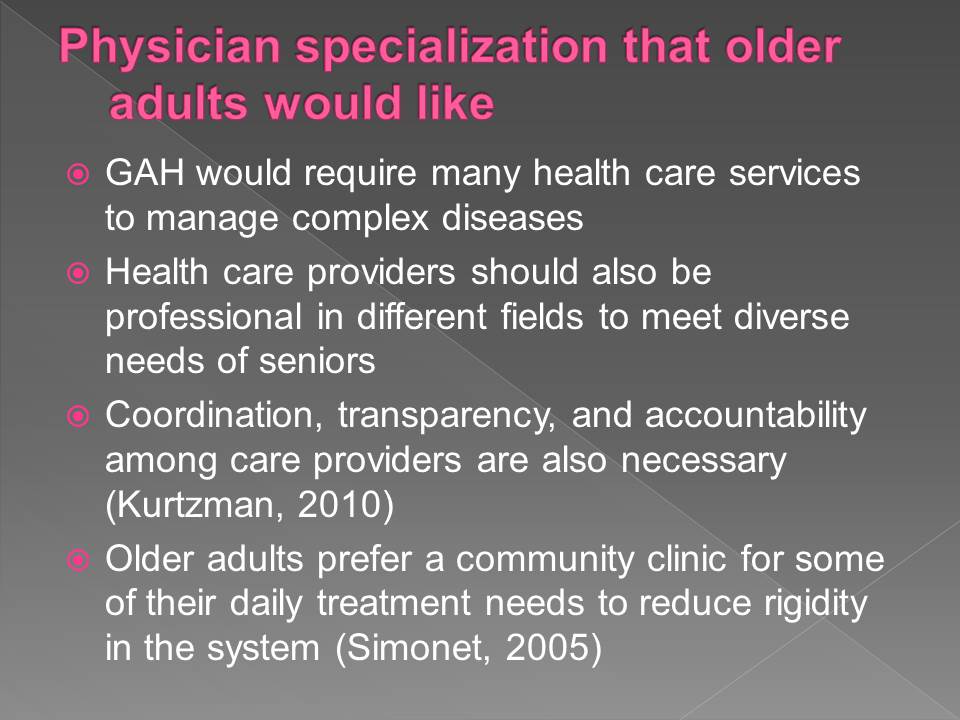
References
Bohmer, R. M., and Lee, T. H. (2009). The shifting mission of health care delivery organizations. New England Journal of Medicine, 361(6), 551-553.
Christmas, C., and Andersen, R. A. (2000). Exercise and older patients: Guidelines for the clinician. Journal of the American Geriatrics Society, 48(3), 318-24.
Harris-Kojetin, L., Sengupta, M., Park-Lee, E., and Valverde, R. (2013). Long-Term Care Services in the United States: 2013 Overview. Hyattsville, MD: National Center for Health Statistics.
Kurtzman, E. (2010). A transparency and accountability framework for high-value inpatient nursing care. Nursing Economics, 28(5), 295-307.
Niles, N. J. (2011). Basics of the U.S. health care system. Sudbury, MA: Jones and Bartlett Publishers.
Pozgar, G. D. (2007). Legal aspects of health care administration. Sudbury, MA: Jones and Bartlett Publishers.
Simonet, D. (2005). Patient satisfaction under managed care. International Journal of Health Care Quality Assurance, 18(6), 424-440.